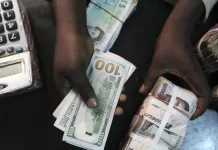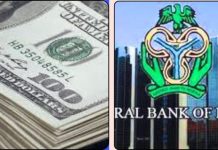Really, is there any hope that Nigeria will develop further with the level of indebtedness it has brought upon itself?
There cannot be a simple discussion without the mention of how heavy Nigeria’s external debts are not to talk of the internal debts that keeps accumulating.
Recent reports from the Central Bank of Nigeria (CBN) has shown that Nigeria has spent a whooping sum of $112.35 million servicing external debt.
Read Also: See List Of Countries Using Dollar Currencies
Trajectory Of Debt Servicing
As depicted by the data obtained from the CBN’s Weekly International Payments, Nigeria spent 146.17% higher than the $45.64 million spent in December 2022, on external debts.
In January this year, the Federation Account Allocation Committee shared ₦750.17 billion among the three tiers of government, as against the the ₦990.19 billion shared in December 2022.
Nigeria did not just start spending heavily to service external debt.
In 2022, $2.4 billion was spent and $2.11 billion in 2021.
According to FAAC disbursement reports, allocations to states had to be reduced in order to save ₦78 billion for debt servicing.
The deductions were made in 2022 from the allocations given to state governments from the Federation Account.
Lagos suffered the most from this deductions, with ₦23.61 billion deducted in 2022 for external debt servicing. Kaduna lost ₦10.25 billion and Cross River parted with ₦7.56 billion.
Nigeria’s Debt Rise
The International Monetary Fund (IMF), believes that Nigeria’s external debts will rise to $121.6 billion, with external reserves climbing to $37.5 billion, yet Nigeria plans to spend 82% of it’s revenue on interest payments in 2023.
This was disclosed in a table of projections in its ‘IMF Executive Board Concludes 2022 Article IV Consultation with Nigeria Summary.
You May Also Read: See Why Otedola Sees Elumelu As A Backstabber
The projections showed an improvement in the share of the government’s revenue used as interest payment, with interest payment falling from 96.3% in 2022 to 82% in 2023.
It added that interest payment was 86.1% and 87.8% of the Federal Government’s revenue in 2020 and 2021.






